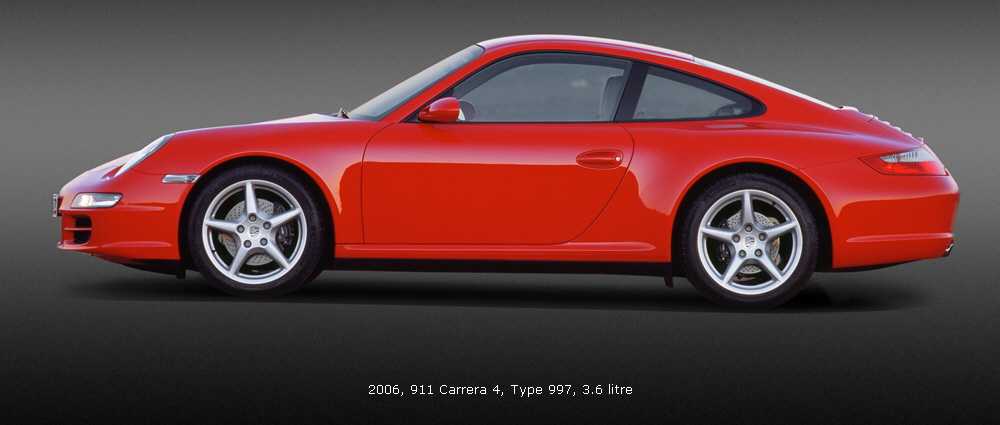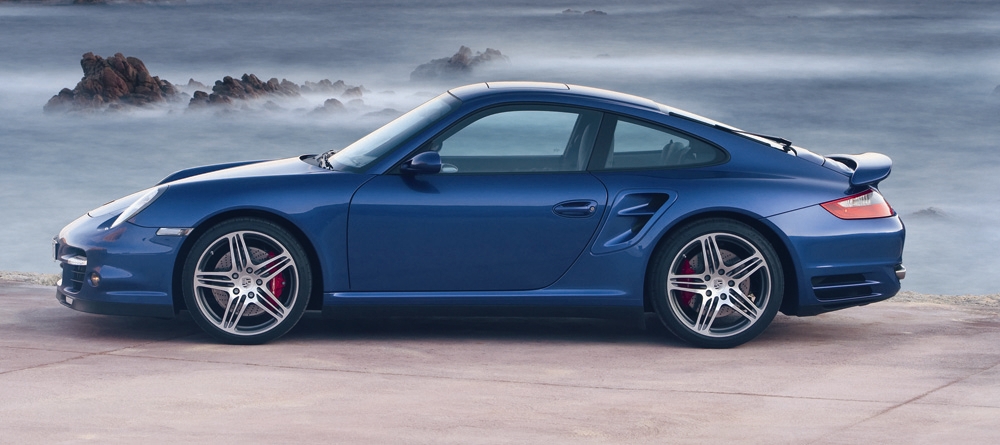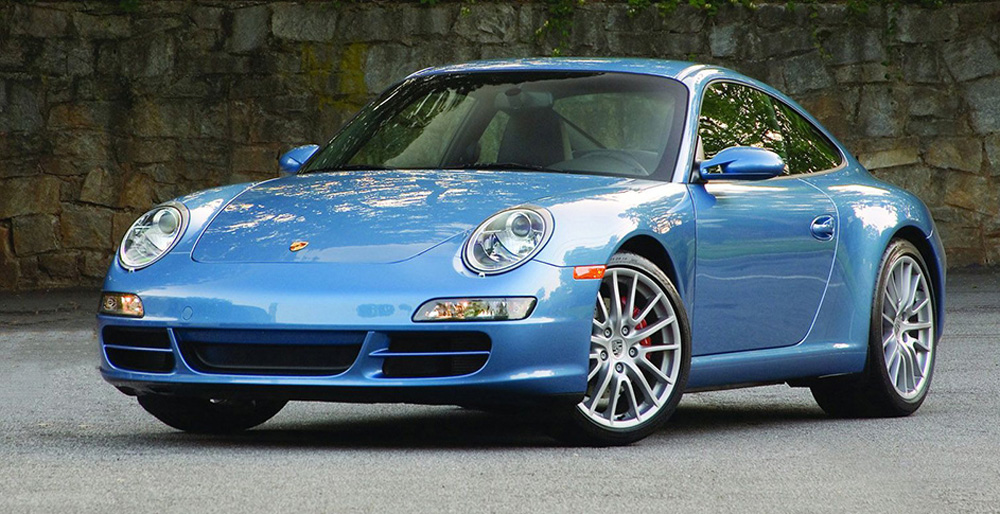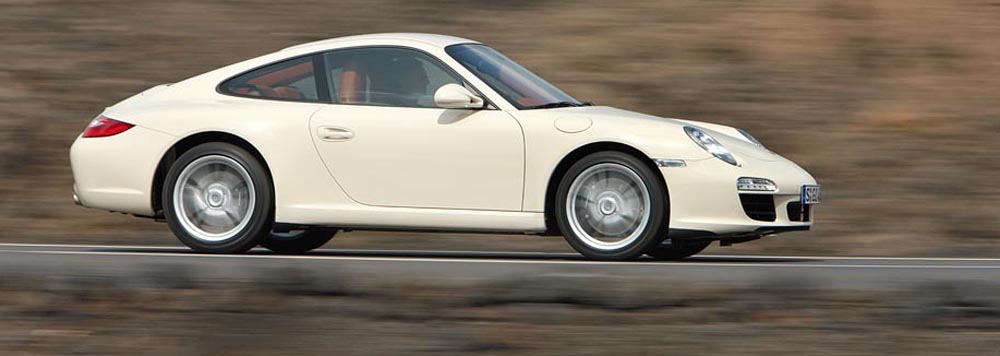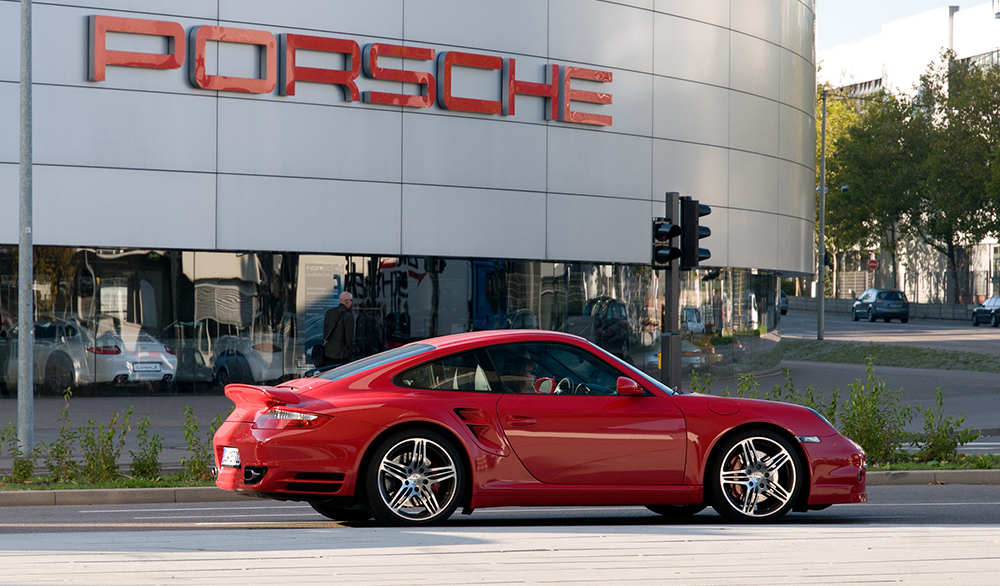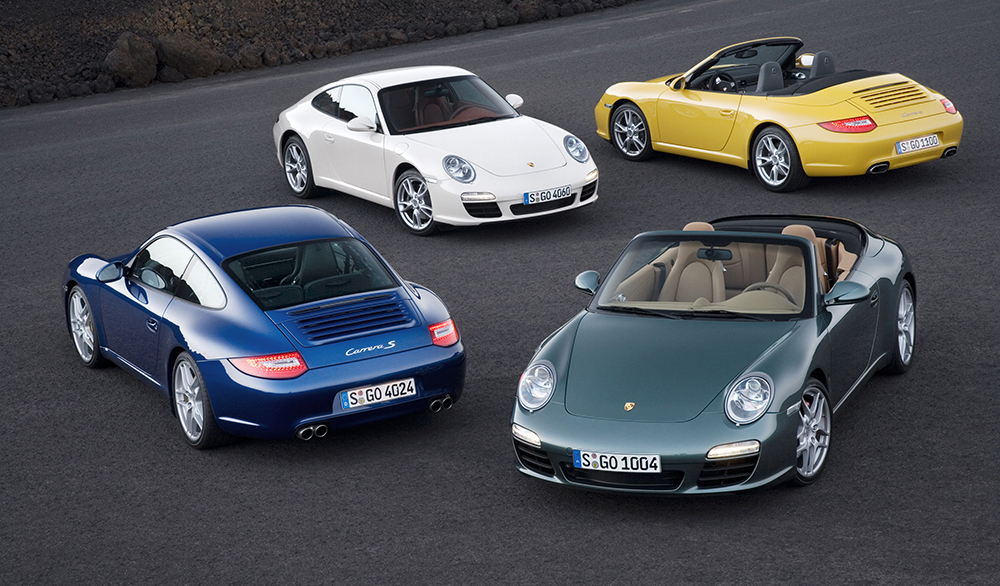|
|
|
Porsche 911 : Type 997 (2005-2011) Classic and modern - By July 2004 the time had come: with the 911 Carrera and 911 Carrera S models, Porsche launched a further 911 generation, which internally was called the 997 range. Its oval, clear glass front headlights with additional lights in the front-end section again reflect the traditional 911 design. However, the 997 impressed not only in its design – its performance was impressive too: the Carrera's flat 3.6-litre engine produced 325 hp, while the newly developed 3.8-litre engine of the Carrera S delivered no less than 355 hp. Also extensively reworked was the running gear, which on the Carrera S was supplied as standard with Porsche Active Suspension Management. In 2006, Porsche brought out a 911 Turbo, which was the first production car with a petrol engine to have a turbocharger with variable turbine geometry. After the model upgrade in autumn 2008, the 997 became more efficient still thanks to direct petrol injection and a direct shift gearbox. Never before on a 911 had the individuality of the driver been taken into account to such an extent. Carrera, Targa, convertible, rear end and all-wheel drive, turbo, GTS, special editions and road versions of the GT racing cars – in the end the 911 family comprised 24 different models.
2006, 911 Turbo Coupé, Type 997
911 Carrera, Type 997 2008: Porsche Doppelkupplung PDK S
911 Carrera Cabriolet, Type 997
911 Carrera, Type 997
2007, 911 Turbo Coupé, 3.6 litre
2009, 911 Carrera, Type 997
911 classis | G series | Type 964 | Type 993 | Type 996 | Type 997 | Type 991
|
|
Home < Porsche < Porsche Cars < History
|
